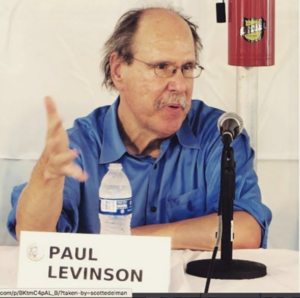Few things get my eye twitching like I’m Chief Inspector Dreyfus in “The Pink Panther” than a lead in a newspaper article like this:
“Fifty people gathered together at GreenSpacePark on Saturday for the Shiny Happy Music Festival.”
It’s not that an opening sentence such as this is technically wrong. The problem instead is that it’s a cop-out that cheats the reader (and the writer) of whatever the actual story might be.

First of all, the number of people at an event is a nut graf detail at best. The lead is your “A” material. It’s your first impression. It’s that chance to snag a reader’s attention. In the digital age, it’s one line of text that readers MIGHT glimpse if they skim past the headline. Mark it down as precious real estate. You can’t afford to waste it.
If the most you can offer people to encourage them to keep reading your work is how many showed up, you’ve failed as a reporter. It’s that simple. You had one job to do, as the meme goes. Tell the story well. If you do it right, you can engage the reader, entertain them, inform them and dazzle them with data.
Here are some tips I’ve picked up over the past two decades as a professional writer:
1) Start by telling the story. Sounds simple, but surprisingly elusive for some. Find the real narrative thread and run with that. Let’s say, for example, that you’re covering the Shiny Happy Music Festival and the real news is that a storm drenched the place. Talk to that couple who camped out all night and now huddle under a shelter from the maelstrom. Make THEM your lead. You rarely go wrong finding a person on whom to pin the narrative opening, particularly in features.
2) Write like you’re talking to an actual person. When I first started working at The St. Petersburg Times, I remember being coached by editors to imagine what it might be like to call my grandmother on the telephone and relay the story to her. It is amazing how effective this proved to be. So, pick someone that you think you would want to impress with your eye for detail and turn of phrase and write with them in mind as your audience. With this trick, it should be easier to find the most interesting tidbit from that County Commission meeting to share with someone and make them care about the topic.
3) Don’t over-attribute. Obsessively, excessively covering your rear with qualifiers for information can be deadly to what might otherwise be a lively narrative. It can be especially problematic in crime stories, with frequent speed bumps in the form of “a police spokesperson said” or “a report stated” or “according to an affidavit.” For such stories, try something more elegant, such as a blanket qualifying line like “Police investigators and reports gave this account:” as a nut graf and then just tell the story.
4) Use quotes. If people want to read a dry rundown of what the Board of Education discussed, they can get the minutes ahead of next month’s meeting. You are the eyes and ears of your readers. You’re filling a chair in the audience so they don’t have to. Don’t let them down. Share what people said about topics on the agenda. Strengthen your story with voices beyond your own.
5) Translate. Some jargon and statistics may be unavoidable, but don’t assume everyone speaks the same language as the city’s planning director. Be ready, be happy to explain how the county’s property tax system works in a Tweet-length sentence (or maybe just a little longer).
6) Read it out loud. This is a crucial final (one hopes) step before you file the story to an editor or post it on the internet. How does the story flow when read aloud? Is it too clogged with jargon? Overwhelmed by unnecessary attribution? Does the lead fall flat? Are you tripping on clumsy constructions? If these things slow you down, imagine how they might affect a reader who’s less familiar with the material. Tweak as needed.


